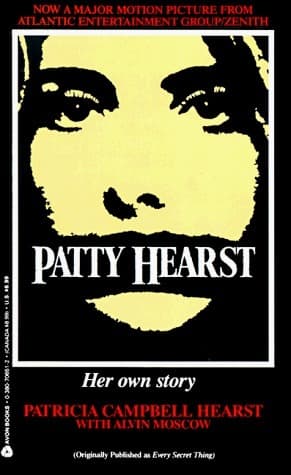
Book Review Summary: Patty Hearst: Her Own Story
Introduction
"Patty Hearst: Her Own Story" is a gripping account written by Patricia Campbell Hearst, detailing her personal experiences and the events surrounding her kidnapping by the Symbionese Liberation Army (SLA) in 1974. This book offers a unique perspective, as it is the victim's own story, providing readers with an in-depth look at the psychological and physical trauma she endured during her captivity. In this article, we will delve into the book's analysis, readers' rave reviews, and provide reasons for both recommending and not recommending it.
About Patricia Campbell Hearst
Patricia Campbell Hearst, also known as Patty Hearst, is the granddaughter of William Randolph Hearst. She was born into a prominent American family and was kidnapped by the SLA in February 1974. Hearst's kidnapping made headlines, and her subsequent involvement with the group and subsequent arrest for bank robbery captivated the public's attention. After serving seven years in prison, her sentence was commuted by President Jimmy Carter, and she was released in 1979. In 2001, she was granted a full pardon by President Bill Clinton.
Analysis of Views
-
A Personal Account of Trauma: Readers praise the book for providing a firsthand account of Patty Hearst's experiences during her captivity. They feel that it offers a raw and honest portrayal of the physical and psychological trauma she endured, allowing readers to empathize with her plight.
-
Insight into Brainwashing: The book sheds light on the concept of brainwashing, highlighting how Patty Hearst was subjected to SLA's radical ideology and manipulated into participating in their activities. Readers appreciate the insight it provides into the psychological aspects of such situations.
-
Engaging Storytelling: Many readers find the book engaging and compelling. They appreciate the way Hearst narrates her story, making it easy to follow and understand the events that transpired during her captivity. The book's pacing is praised for maintaining a sense of suspense throughout.
-
Historical Significance: The book is seen as an important historical account, providing insights into a significant moment in American history. Readers appreciate the context it provides and the way it sheds light on the social and political climate of the time.
-
Fascinating Legal Battles: The book also delves into Patty Hearst's legal battles, exploring the complex legal issues surrounding her case. Readers find it intriguing to see how she navigated the legal system and the various legal strategies employed by her defense team.
Reasons for Recommendation
-
Firsthand Account: The book offers a firsthand account of Patty Hearst's experiences, providing readers with a unique perspective on her kidnapping and captivity. This personal narrative adds depth and authenticity to the story.
-
Insightful Insight: The book offers valuable insights into brainwashing and its effects on individuals. It sheds light on how individuals can be manipulated and controlled by extremist groups, making it an important read for those interested in psychology and social dynamics.
-
Engaging Storytelling: The book's engaging narrative style keeps readers hooked from start to finish. The story is well-paced, maintaining a sense of suspense and tension throughout. This makes it an enjoyable read for those who appreciate gripping storytelling.
-
Historical Significance: The book provides valuable historical context, shedding light on a significant moment in American history. It offers insights into the social and political climate of the time and provides a unique perspective on the events that unfolded during this period.
-
Legal Battles Explored: The book delves into Patty Hearst's legal battles, exploring the complex legal issues surrounding her case. It offers a fascinating look at how legal strategies can be employed in high-profile cases and how they can shape public opinion and influence legal outcomes.
Reasons for Not Recommendation
-
Limited Perspective: Some readers feel that the book has a limited perspective, as it primarily focuses on Patty Hearst's experiences rather than providing a broader analysis of the events surrounding her kidnapping and involvement with the SLA. They feel that additional context would have enriched their understanding of the situation.
-
Emotional Distance: A few readers find that Patty Hearst's writing style detaches them emotionally from the story. They feel that her detachment from her experiences makes it difficult to fully connect with her journey and understand the depth of her trauma.
-
Repetitive Detail: Some readers feel that the book contains repetitive details, particularly towards the later sections. They find that certain aspects of her captivity are described in excessive detail, which can make the reading experience feel monotonous at times.
Conclusion
"Patty Hearst: Her Own Story" offers a gripping account of Patricia Campbell Hearst's experiences during her kidnapping by the Symbionese Liberation Army in 1974. The book provides readers with a firsthand account of her physical and psychological trauma, shedding light on the concept of brainwashing and its effects on individuals. While some readers appreciate its engaging storytelling and historical significance, others feel that it has limited perspectives and repetitive details. Overall, "Patty Hearst: Her Own Story" is a thought-provoking read for those interested in true crime stories, psychology, and social dynamics.